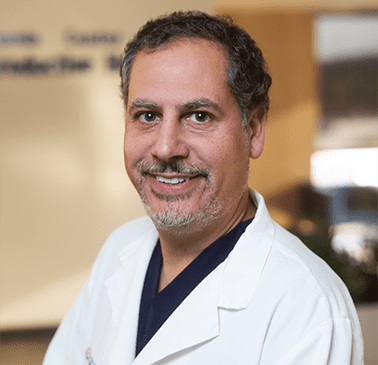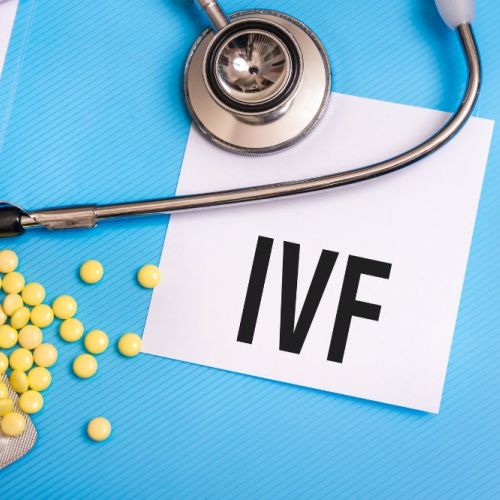Different Types of Assisted Reproductive Technology

There are many different reasons that couples may experience difficulty conceiving a child, which may be related to fertility issues with the woman, the man, or both. There are different types of assisted reproductive technology (ART) that may help couples overcome problems that are causing an inability to conceive.
ART refers to medical procedures that can be done to manipulate eggs, sperm, or embryos to improve the chances of attaining a successful pregnancy. The team at The Center for Reproductive Health is committed to helping couples find the best solution to infertility challenges with the help of ART.
In Vitro Fertilization (IVF)
IVF is probably the most well-known form of ART. This procedure involves harvesting eggs from the mother and fertilizing them with sperm in a lab where they’re allowed to grow for a few days into embryos. The embryos are then implanted in the mother’s uterus. The sperm may be from the woman’s partner or a sperm donor.
Before eggs are harvested, injectable hormones are given to stimulate the growth of multiple eggs, which is usually done for 7 to 9 days. A relatively new form of ART known as Mini IVF is done by using a gentler approach to ovarian stimulation in order to produce a few high-quality embryos rather than multiple embryos.
Intrauterine Insemination (IUI)
Intrauterine insemination or IUI is also known as artificial insemination. The procedure is done by injecting sperm into the uterus around the time of ovulation. Before the sperm is injected, it’s processed and washed to enhance sperm quality. In some cases, the ovaries may be stimulated with hormones before the sperm is injected.
IUI bypasses thick cervical mucous that may prevent sperm from traveling to the uterus. This procedure may also be used if sperm aren’t very active or are low in count, and or when the cause of infertility is unknown.
Intracytoplasmic Sperm Injection (ICSI)
This procedure is done by injecting a single sperm into the center of an egg. It can be combined with IVF when sperm count or quality is very low and may be recommended if prior attempts at IVF have failed. This may be an effective form of ART if the fertility issues are sperm related.
In traditional IVF, thousands of sperm are placed in the same dish as a single egg to attain fertilization naturally. When there are significant sperm abnormalities, injecting a single sperm into an egg greatly increases the chance of attaining a successful pregnancy.
Frozen Embryo Transfer
During IVF, not all of the embryos are used and some may be frozen for future use. In frozen embryo transfer, frozen embryos are thawed and implanted into the woman’s uterus. Eggs, sperm, or embryos may also be from a donor.
The fertility experts at The Center for Reproductive Health specialize in diagnosing and treating infertility challenges. If you’re considering ART, schedule an appointment for a comprehensive examination and evaluation to find out the best fertility treatment options for you. Call today with any questions you may have or to schedule an appointment.
Eliran Mor, MD
Reproductive Endocrinologist located in Encino, Santa Monica, Valencia & West Hollywood, CA
FAQ
Reproductive endocrinology and Infertility is a sub-specialty of Obstetrics and Gynecology. In addition to managing medical and surgical treatment of disorders of the female reproductive tract, reproductive endocrinologist and infertility (REI) specialists undergo additional years of training to provide fertility treatments using assisted reproductive technology (ART) such as in vitro fertilization.
Reproductive endocrinologists receive board certification by the American Board of Obstetrics and Gynecology in both Obstetrics and Gynecology and Reproductive Endocrinology and Infertility.
In general, patients should consider consulting with an REI specialist after one year of trying unsuccessfully to achieve pregnancy. The chance of conceiving every month is around 20%, therefore after a full year of trying approximately 15% of couples will still not have achieved a pregnancy.
However, if a woman is over the age of 35 it would be reasonable to see a fertility specialist earlier, typically after 6 months of trying.
Other candidates to seek earlier treatment are women who have irregular menses, endometriosis, fibroids, polycystic ovary syndrome (PCOS), women who have had 2 or more miscarriages, or problems with the fallopian tubes (prior ectopic pregnancy).
Approximately 1/3 of the time cause for infertility is a female factor, 1/3 of the time a male factor, and the remaining 1/3 a couples’ factor.
At CCRH, we emphasize the importance of establishing a correct diagnosis. Both partners undergo a comprehensive evaluation including a medical history and physical exam.
Furthremore, the woman’s ovarian reserve is assessed with a pelvic ultrasound and a hormonal profile. A hysterosalpingogram (HSG) will confirm fallopian tube patency and the uterine cavity is free of intracavitary lesions. A semen analysis is also obtained to evaluate for concentration, motility, and morphology of the sperm.
Additional work up is then individualized to direct the best possible treatment option for each couple.
In vitro fertilization (IVF) is the process that involves fertilization of an egg outside of a woman’s body.
The process starts with fertility drugs prescribed to help stimulate egg development. In your natural cycle, your body is only able to grow one dominant egg, but with stimulation medication we can recruit multiple eggs to continue to grow. After about 8-10 days of stimulation, the eggs are surgically retrieved and then fertilized with sperm in a specialized laboratory. Fertilized eggs are then cultured under a strictly controlled environment within specialized incubators in the IVF laboratory for 3-5 days while they develop as embryos. Finally, embryos (or an embryo) are transferred into the uterine cavity for implantation.
Before deciding if IVF is the right choice, it’s important to sit down with an REI specialist to discuss available treatment options. For some people, other methods such as fertility drugs, intrauterine insemination (IUI) may be the best first choice treatment. At CCRH, we believe each individual couple is unique and not everyone needs IVF.
While not painful, the fertility medications may some side effects including headaches, hot flashes, mood swings, and bloating. The injection sites may also bruise.
Unfortunately, no. Many people think once they start IVF it’s a matter of time that they will be pregnant and have a baby. But according to national statistics per the Society of Assisted Reproduction (SART), on average 40% of assisted reproduction cycles achieve live births in women under age 35. The chances of success then continue to decrease with advancing age.
At CCRH, we employ only evidence-based interventions to ensure patient safety and optimal outcome. While we cannot guarantee a baby, we guarantee that you will receive the best, most advanced, personalized care to help you maximize your chance of a baby.
The average IVF success rate (success measured in live birth rate) using one’s own eggs begins to drop around age 35 and then rapidly after age 40. This is due to the decline in egg quantity and egg quality as a woman ages.
Our clinic’s success rate consistently beats the national average year after year.
Individual insurance plans often do not have any coverage for infertility treatments. If you have a group plan, you can call members services to see if they have coverage for infertility (including consultation/workup and IVF).
After your consultation with our REI specialist, one of our dedicated account managers with sit with you to go over the cost of treatment.




